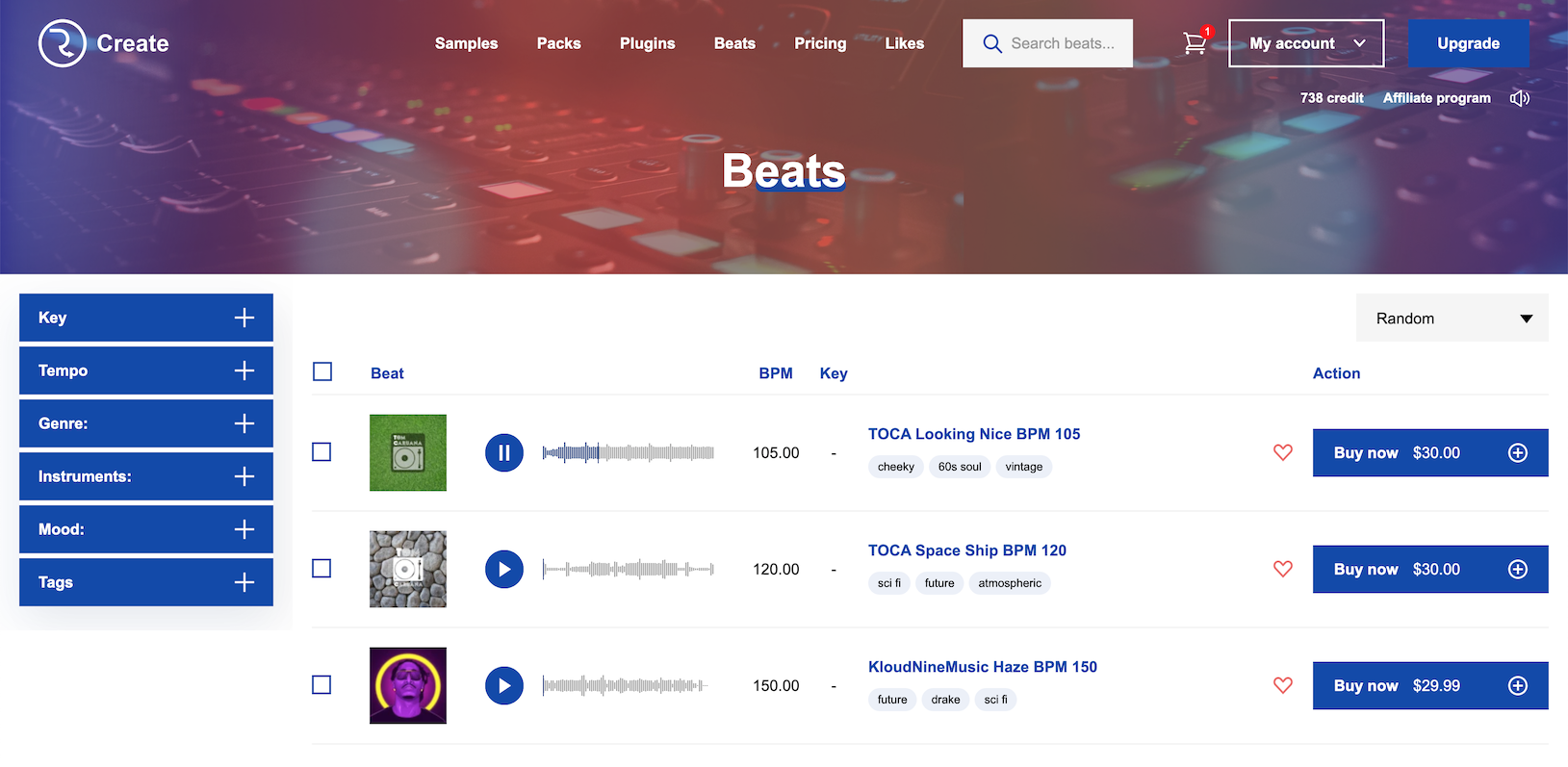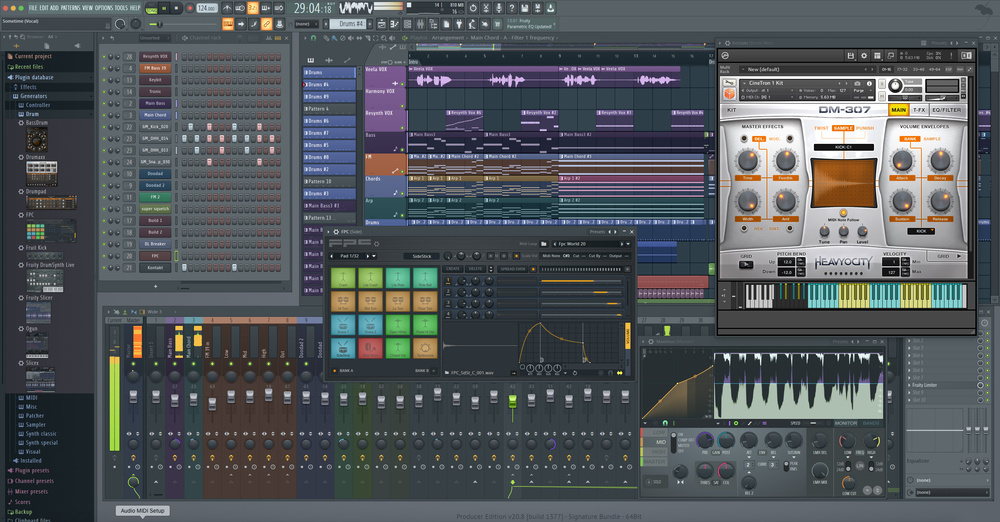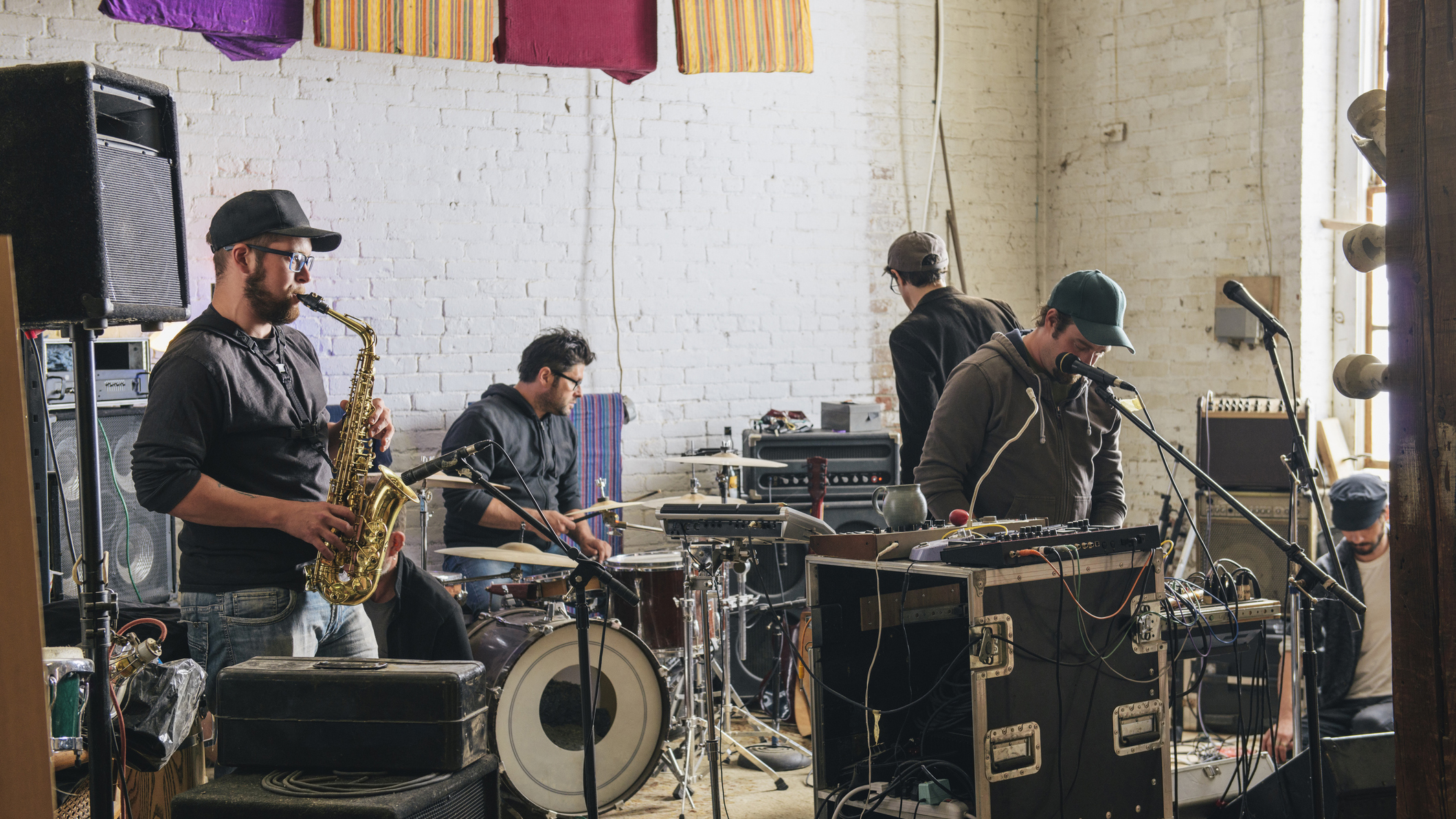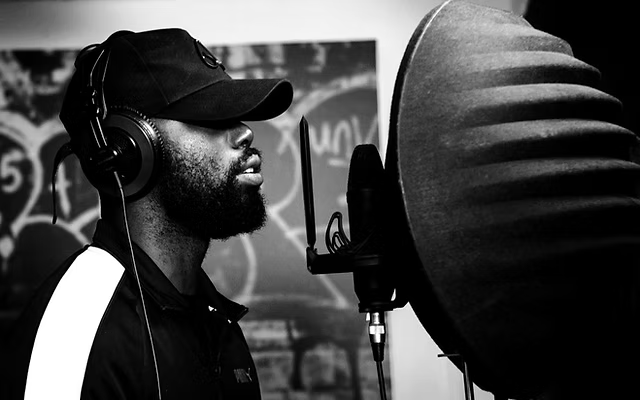Need a Backing Track—What are your Options as an Artist?
Think you have what it takes to be the next Eminem or Chappell Roan? Just one problem—you don’t have any backing tracks to bring your lyrics to life. But don’t worry! Finding the perfect instrumental to support your songwriting has never been easier. In this guide, we’ll walk you through five different ways to get the perfect backing track, breaking down the pros and cons of each method. Whatever your circumstance, there’s an option that’s right for you.
1. Lease or Buy Beats

One of the most common ways artists obtain backing tracks is by leasing or purchasing beats from beatmakers that specialise in producing tailor made backing tracks. A whole industry has grown up to cater for this demand with websites like BeatStars, Airbit, and now RouteNote Create offering a wide range of instrumentals across every conceivable genre. This makes it easy to find a beat that fits with your musical vision. Or maybe you will find a beat that will spark a whole new musical idea.
How It Works:
- Leasing: a non-exclusive license is typically the cheapest way of obtaining a beat, but it does mean other artists can use the same beat. There are different types of leases, such as basic MP3 leases, WAV leases, or premium leases that come with higher streaming and distribution limits. At RouteNote Create, we offer one simple blanket licence that includes a high-quality WAV and NO release restrictions.
- Exclusive Purchase: For a higher premium, many beatmakers offer the opportunity to buy full ownership of a track. This ensures no one else can use it after you. An Exclusive license gives you complete control over your tracks usage and distribution.
Where to Find Beats:
- BeatStars: one of the most popular marketplaces for producers and artists
- Airbit: offers similar services with instant download options
- RouteNote Create Simple non-restrictive WAV licence applies to all beats on the site
- YouTube: Many producers post free beats with purchase options in the description
- Producer Websites: Many established beatmakers have their own sites where they offer a wider range of beats.
- Social Media: Social media sites like TikTok and Instagram are often used by beatmakers promoting fresh new beats.
Advantages:
- Affordable options for independent artists
- Saves time compared to making your own
- Huge variety of professional beats readily available
- Instant access—most beat marketplaces allow you to download the track immediately
- With a licence in place, you can distribute and monitise your release
Dissadvantages:
- Leased beats often come with restrictions (e.g., limited streams, no radio play)
- The same beats can be used by multiple artists, reducing originality
- Exclusive rights can be expensive, sometimes costing hundreds or even thousands of dollars
- Some free beats come with producer tags or are lower quality mp3 files
- Releases using non-exclusive beat leases cannot be distributed to content ID stores such as YouTube.
2. Hiring a Producer

Traditionally, artists have collaborated with experienced producers to create songs, and this remains one of the best ways to get a unique backing track tailored to your style. A producer can work with you to craft a custom instrumental from scratch, ensuring that your track is one-of-a-kind. Thanks to online platforms and social media, connecting with talented producers has never been easier.
How It Works:
- Freelance Platforms: Websites like Fiverr, SoundBetter, Upwork, and AirGigs allow artists to hire producers directly. Producers often have portfolios, reviews, and pricing information available, making it easier to choose the right person to bring your musical vision to life.
- Social Media: Many producers showcase their work on social media platforms such as Instagram, TikTok, Facebook and YouTube. The way these sites work means that once you start searching for a certain type of producer, the algorithm will soon show you an array of similar producers. Engaging with their content and reaching out via DMs can often lead to a collaboration.
- Music Forums and Communities: Explore websites like Reddit’s r/WeAreTheMusicMakers, music production-focused Discord servers, and Facebook groups dedicated to beat selling. These online communities are popular gathering spots for producers and beatmakers. If you find someone whose style aligns with your artistic vision, don’t hesitate to reach out and connect.
- Local Studios and Musicians: In-person collaboration is often the most rewarding and effective way to create music. Chances are, there’s a local musician finder group on Facebook. Join the group, introduce yourself, and ask if anyone is interested in collaborating on a project.
Advantages
- No risk of another artist using the same track
- Custom-made tracks that fit your artistic vision
- Better control over instrumentation, tempo, and structure
- Potential long-term working relationships with producers
- As long as the track doesn’t use a sample loop it can be sent to content ID stores like YouTube
- Additional promotional opportunities if the producer is willing to discuss the project on his socials and share the finished release
Disadvantages
- Custom beats can be much more expensive, often over a thousand dollars, depending on the producer’s reputation
- Requires clear instructions and communication to get the kind of track that you’re after.
- Finding the right producer can take time, and revisions may be needed
- There is no guarantee the finished product will be what you are after. You may still have to pay for a service that you are not satisfied with
- Dependence on someone else’s schedule can slow down the release process
3. DIY Approach

Although this approach requires more effort, it can be the ultimate long-term solution to your backing track needs. While learning to use a Digital Audio Workstation (DAW) may seem overwhelming at first, you’ll need one to record your vocals anyway. Experimenting with royalty-free loops, sample packs, and construction kits is simply an extension of what a DAW can do. In fact, many beatmakers selling tracks online are often just curating and arranging sample loops within a DAW.
By creating your own custom backing tracks, you gain full creative control, ensuring that your music is truly personal and unique. Thanks to the way samples are labeled with tempo and key information, even with basic editing skills, you can quickly assemble a beat. Plus, professionally recorded samples—like those available on RouteNote Create—are already mixed and polished, making it easier to achieve a high-quality sound.
How to Get Started
- Choose a DAW – A DAW (Digital Audio Workstation) is the software you use to produce and arrange your music. Popular DAWs include: Ableton Live, FL Studio, Logic Audio, Reaper. If you have an Apple Mac computer you will have access to the totally free Garage Band.
- Select some Royalty-Free Loops and Samples – Use the search options on Sample selling platforms to find loops that sit with your creative vision. Create short lists or favourites for your consideration before proceeding with a purchase.
- Explore Construction Kits – Another fantastic sample-based solution is to use construction kits. These are pre-arranged musical building blocks. They will feature a complete composition supplying all the separate song elements i.e Drums, Bass, Keys, Guitar as sample loops or stems. This gives you lots more scope for the arrangement of your song as you can bring different elements in and out.
- Experiment with MIDI Packs – MIDI packs are a powerful compositional tool that differ from sample loops, as they contain note data rather than audio recordings. This allows you to trigger virtual instruments and drums within your DAW, giving you complete flexibility over your sound.
By using pre-written MIDI chord progressions, melodies, and basslines, you can create unique productions simply by choosing your own instruments and synths. This is especially useful for artists who may not have formal music theory training but have a clear vision of the sound they want to achieve.
Advantages
- Full creative control over your backing tracks.
- No need to rely on producers or lease beats.
- Saves money in the long run as you are not paying for producers.
- Creatively, it can be highly rewarding.
- If using MIDI packs and your own instrumentation you can send your releases to Content ID stores such as YouTube.
- You get to claim all the songwriting and keep 100% of royalties.
Dissadvantages
- Learning to produce using a DAW can be time-consuming and difficult.
- It’s advisible to learn and develop some Mixing and mastering skills to achieve a professional sound.
- A fully fledged DAW can be expensive, and you may need additional plugins and software instruments, which can be costly.
4. Use AI Music Tools

The latest innovation in sourcing backing tracks comes from AI-generated music. In recent years, AI technology has advanced to the point where it can produce high-quality instrumentals that rival human-made beats. Two of the most powerful tools available today are Suno and Udio, both capable of generating music across virtually any genre in minutes. Simply enter a prompt, choose your preferred styles and genres, and let the AI handle the rest.
How It Works:
- Choose which AI tool you want to experiment with. Check out examples of the AI-generated music on the home pages
- Look at the different pricing plans. Most offer a free plan but you will often have to pay for a premium plan to get a license to release the AI-generated results.
- Start experimenting with prompts and settings to see what it can create.
- Once you get something you like use the various tools to tweak and edit the beat to your liking
- AI-generated music may struggle when instructing it to do specific tasks, for example when trying to structure a song. In these cases, you may need to edit your AI beats in a DAW to fit your vision.
- Export any results you are happy with
Advantages:
- Instant music creation without any technical skills necessary.
- Cost-effective compared to hiring a producer or purchasing a lease or exclusive beat.
- Provides inspiration for songwriting.
- The backing tracks can be used commercially if the license permits.
Dissadvantages
- AI-generated music often contains recognizable artifacts and does not yet match the high-quality audio of a professionally produced track.
- Limited creative control—tracks often sound generic.
- AI tools may struggle to fully understand your artistic vision.
- Some platforms require licensing fees for commercial use.
- Some streaming services can detect and limit visibility of AI-generated tracks
- No legal precedents have been set regarding the copyright status of AI work so future usage rights are uncertain.
- AI-generated music cannot be sent to content ID stores such as YouTube.
5. Live Music Approach

Finally, for artists who prefer an organic, human touch to their music, working with live musicians or a band can bring unequalled depth and authenticity to a backing track. This method works particularly well for artists working in the following genres: jazz, funk, soul, rock, folk, acoustic, gospel and blues.
How to Record a Live Backing Track
1: Hire Session Musicians – If you don’t have a band, hiring professional instrumentalists to record your backing track has never been easier. However, successfully executing this requires careful planning.
- Websites like Fiverr, Airgigs and SoundBetter allow you to book experienced session musicians.
- Connecting with musicians has also been made much easier through local Facebook groups, Reddit forums, or networking events.
- Make sure you have a clear vision for the project before you start any sessions.
2: Work with a Band – If you have a band, it’s vital to rehearse together until the track is tight. Consider using a home studio or professional recording space for this process. Then, when recording the backing track apply the following rules
- Use multi-mic setups for a professional recording.
- Ideally, record to a click track, as this makes it much easier for editing and post-production
- Work with a sound engineer for mixing and mastering.
3: Live Recording vs. Studio Production – Decide whether you want a raw, live-recorded feel or a polished studio version.
- Live recording captures the energy of real-time performance. Take care to keep
- Studio production allows for isolated instrument recording and more precise mixing options.
Advantages
- Organic, natural sound with a relatable human touch
- Unique to your style with no risk of using the same track as other artists.
- Translates perfectly for live performances as the recorded sound should match the stage performance.
- Can send releases to Content ID stores such as YouTube.
Dissadvantages
- Requires professional recording equipment or spending money on studio time.
- Can be costly to hire session musicians.
- Can be more time-consuming than digital production.
- If tracks are not recorded to a click track, your song may be tricky to edit or remix.
Conclusion
As an artist, you have a variety of options for acquiring backing tracks, each with its own advantages and considerations. When deciding on the best approach, it’s important to weigh the pros and cons while keeping your artistic vision at the forefront. However, practical factors such as budget, project goals, access to musicians, and available resources will also play a role in your decision.
Ultimately, choose the option that aligns best with your needs and inspires you to deliver your strongest vocal performance and songwriting. Whatever path you take, let your creativity lead the way—best of luck!
Need the perfect Beats for your vocals? – RouteNote Create offers some of the best beats on the block.
